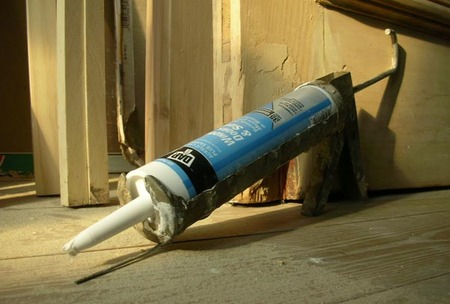In October 2009, Vice President Joe Biden announced $454 million in funding for the new “Recovery Through Retrofit” plan (nicknamed “Cash for Caulkers”), a stimulus effort to push Americans to weatherize their homes, make them more energy efficient and cut carbon emissions.
An estimated 130 million homes across the U.S. generate more than 20% of the country’s carbon dioxide emissions, while commercial buildings account for 17%. But, with current energy-saving techniques and technologies, home energy use can be reduced by as much as 40%. Not only that, but it can also reduce up to 160 million metric tons of greenhouse gas emissions annually by 2020 and reduce home energy bills by $21 billion annually. The stimulus aspects include spurring growth in the home energy-efficiency retrofit industry and creating green jobs.
Cash for Caulkers would cost $23 billion over two years, paying out $2,000 to $4,000 to consumers for no more than half the cost of weatherizing their residences. The plan’s major points are outlined here:
 Many homes are not weatherized, but can still benefit from it, as heating and cooling costs count for up to half of a home’s energy usage. Cash for Caulkers or not, there are ways you can prepare your home for wintry weather that can save you cash and cut your energy consumption:
Many homes are not weatherized, but can still benefit from it, as heating and cooling costs count for up to half of a home’s energy usage. Cash for Caulkers or not, there are ways you can prepare your home for wintry weather that can save you cash and cut your energy consumption:
- Develop energy performance labels for new homes that are built meeting energy-efficiency standards, similar to Energy Star labels on home appliances.
- Develop and establish a national standardized home energy performance label for existing homes so that consumers understand how much retrofitting their homes would save in energy and cost.
- Through property tax or municipal energy financing, allow the retrofit costs to be added to the consumer’s property tax bill to be paid monthly.
- Make it easier to finance energy retrofits at a home’s point of sale through Energy Efficient Mortgages.
- Allow consumers in all 50 states to borrow money for home energy retrofits from private firms at low interest rates.
- Set national standards to qualify energy efficiency and industry training providers to establish consumer confidence.
 Many homes are not weatherized, but can still benefit from it, as heating and cooling costs count for up to half of a home’s energy usage. Cash for Caulkers or not, there are ways you can prepare your home for wintry weather that can save you cash and cut your energy consumption:
Many homes are not weatherized, but can still benefit from it, as heating and cooling costs count for up to half of a home’s energy usage. Cash for Caulkers or not, there are ways you can prepare your home for wintry weather that can save you cash and cut your energy consumption:
- Hire an energy auditor to check out your home’s energy efficiency and show you where improvements can be made.
- Regulate your home’s temperature whether you are home or away with a programmable thermostat. It’s one of the easiest ways to save energy.
- Sealing air leaks and adding insulation can save up to 20% on heating and cooling costs.
- Have energy-efficient, properly sized heating equipment installed by a contractor who meets guidelines set by Energy Star and the Air Conditioning Contractors of America (ACCA).
- Check and change your air filter regularly.
- Get your HVAC tuned up yearly.
- Seal your heating and cooling ducts, because 20% of air that goes through a duct system is lost through leaks, holes and improperly ducts.
- Install new energy-efficient windows with an Energy Star label for your area’s climate. Or, improve your old ones with seal-and-strip caulk and window film to keep the draft out.
- Use a space heater when you only need to keep one room or area warm.